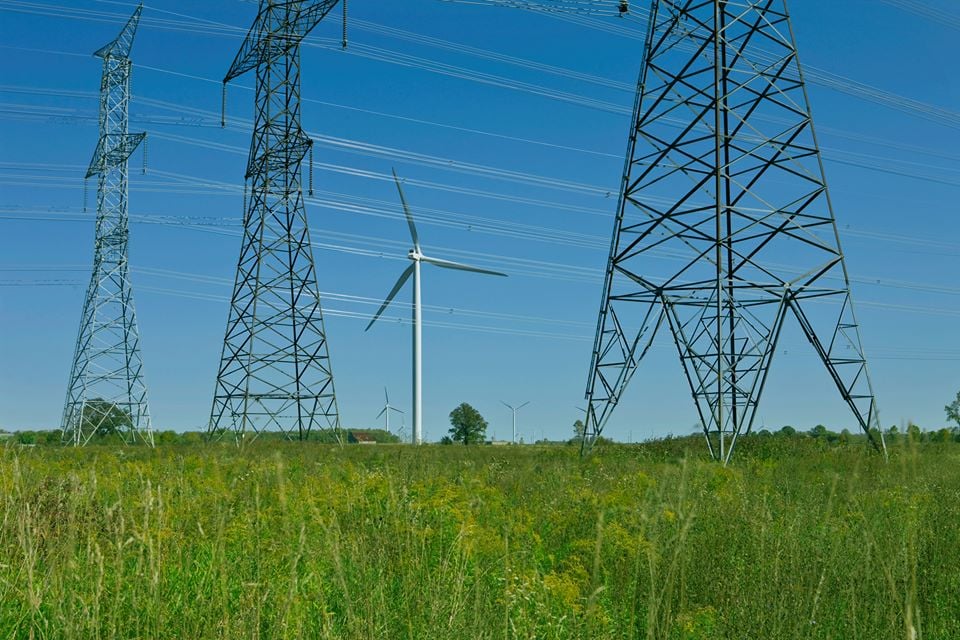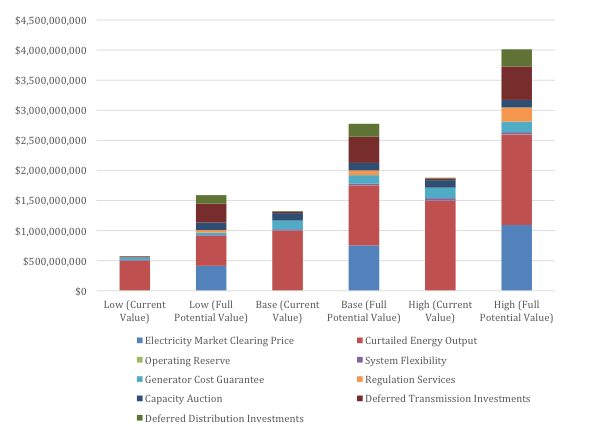
Between CA$1.5 billion (US$1.12 billion) and $4 billion in electricity system cost savings could be achieved by Ontario’s Independent Electricity System Operator (IESO) by installing 1,000MW of energy storage by 2030, according to a new study commissioned by Energy Storage Canada.
Canada’s national association for the energy storage industry commissioned electricity market-focused management consulting firm Power Advisory LLC to write the report, Unlocking potential: An economic valuation of energy storage in Ontario.
The report notes that total savings would likely be in the region of CA$2.7 billion over the 10 years, with CA$1.5 billion in a low scenario and CA$4 billion in a high scenario. Savings would be a “small portion of small system costs” but which are “nevertheless material” according to the authors. This is based on an assumed cost of installation of about CA$200,000 per MW per year, meaning net savings would be between CA$774 million to CA$2 billion when those costs are taken into account.
The savings, to a greater extent, would come from energy storage enabling the more efficient utilisation of long-term generation assets in the province, which is home to just under 40% of Canada’s total population including its capital Toronto.
Try Premium for just $1
- Full premium access for the first month at only $1
- Converts to an annual rate after 30 days unless cancelled
- Cancel anytime during the trial period
Premium Benefits
- Expert industry analysis and interviews
- Digital access to PV Tech Power journal
- Exclusive event discounts
Or get the full Premium subscription right away
Or continue reading this article for free
While the 10-year period to 2030 was assessed, the improving and longer lifetimes of energy storage assets could extend those beneficiary impacts further out towards 2040, the report’s authors said. The economic modelling also did not take into account qualitative benefits such as greenhouse gas emissions reduction, increased electricity export and import balance potential, as well as lower transmission congestion. These qualitative benefits could also produce further savings.
Three distinct service types, wholesale market to provide biggest economic kick
Savings modelled in the Power Advisory report could come from energy storage providing three distinct service types:
Wholesale market savings: The biggest portion of potential saved costs. From energy arbitrage to reduction of reliance on Surplus Baseload Generation, reducing the need for flexibility and procurement mechanisms based on guaranteed costs as well as other beneficiary applications including reduced ancillary service costs.
Potential savings: Wholesale market participation for energy storage could provide CA$1.1 billion to CA$3.1 billion gross savings.
Transmission and distribution investment maximisation: Locationally specific, targeted deployment of energy storage can help maximise the use of Ontario’s existing transmission and distribution (T&D) network assets.
Potential savings: T&D applications could provide between CA$457 million and CA$840 million in gross savings up to 2030.
Direct-to-customer savings: Behind-the-meter applications of energy storage to directly benefit electricity customers could mean reduced demand charges and lower electricity rates based on time-of-use. Renewable energy generation could also be integrated and used at times of higher value.
Potential savings: While the authors did not put specific numbers on savings, Energy-Storage.news has already reported on the application of energy storage to help industrial electricity customers significantly reduce peak demand and therefore energy costs, mainly via Ontario’s Global Adjustment Charge (GAC) policy, which levies peak demand charges on large commercial electricity consumers.

Lowering system costs while improving utilisation of existing investments
In short, energy storage can help manage Ontario’s electricity system better, while also helping negotiate the “operational challenges that have accompanied the transition from a traditional grid to one with fewer emissions and greater variability,” as more renewable energy comes online and the retirement of legacy fossil fuel generators is targeted. System costs will be lower, while utilisation of existing investments can be improved.
However, as with most parts of the world, barriers still exist to this higher level of deployment, the report said and the authors made several specific recommendations to removing them. These include introducing contracting for the “full suite of services energy storage can offer” via the IESO, which would also enable the co-optimsed operation of energy storage resources i.e. allow energy storage to perform multiple services where applicable and desirable. The full savings potential for customers cannot be achieved at present with the market design and structure in place today.
Other recommendations in the full report include calling on the IESO along with regulators and utilities to establish “cost-effective and competitive methods to integrate energy storage,” which could include ensuring future participation of energy storage in Capacity Auctions, figuring out where to best optimise assets such as renewable and baseload generators by adding energy storage and cooperation between the Ontario Electricity Board (OEB) and the IESO to fully extract all value from those aforementioned potential wholesale market and T&D (non-wires) opportunities. The OEB and IESO should work together, the report said, to set out a “clear and reasonable timeline and set of objectives for the full integration of energy storage”.
The authors also noted that the currently in place fixed-cost recover method for the Global Adjustment Charge (GAC) is offsetting a portion of potential savings from the integration of energy storage, based as it is on levying charges from industrial customers to help pay for the electricity network infrastructure maintenance and upgrades. Notably, the Power Advisory report also said that more transparent price signals need to be sent out to the market to help energy storage deliver the optimal balance of its “system-wide benefits”.
While the report recommends reform of the GAC policy to open it up further, many energy storage industry stakeholders have already been able to use it to benefit industrial customers in Ontario, particularly so-called ‘Class A’ large energy users. Roughly 70% of large load users’ bills are calculated from peak demand “based on the previous year’s five provincial peak hours,” Jeremy Goertz, managing director of developer SunGrid Solutions, which has worked on several such projects, told this site earlier this year. The IESO meanwhile began its first trial of a local electricity market, aimed at helping integrate distributed energy resources (DERs) including solar panels and home storage into the grid in late 2019.
You can download and read the full report here.





